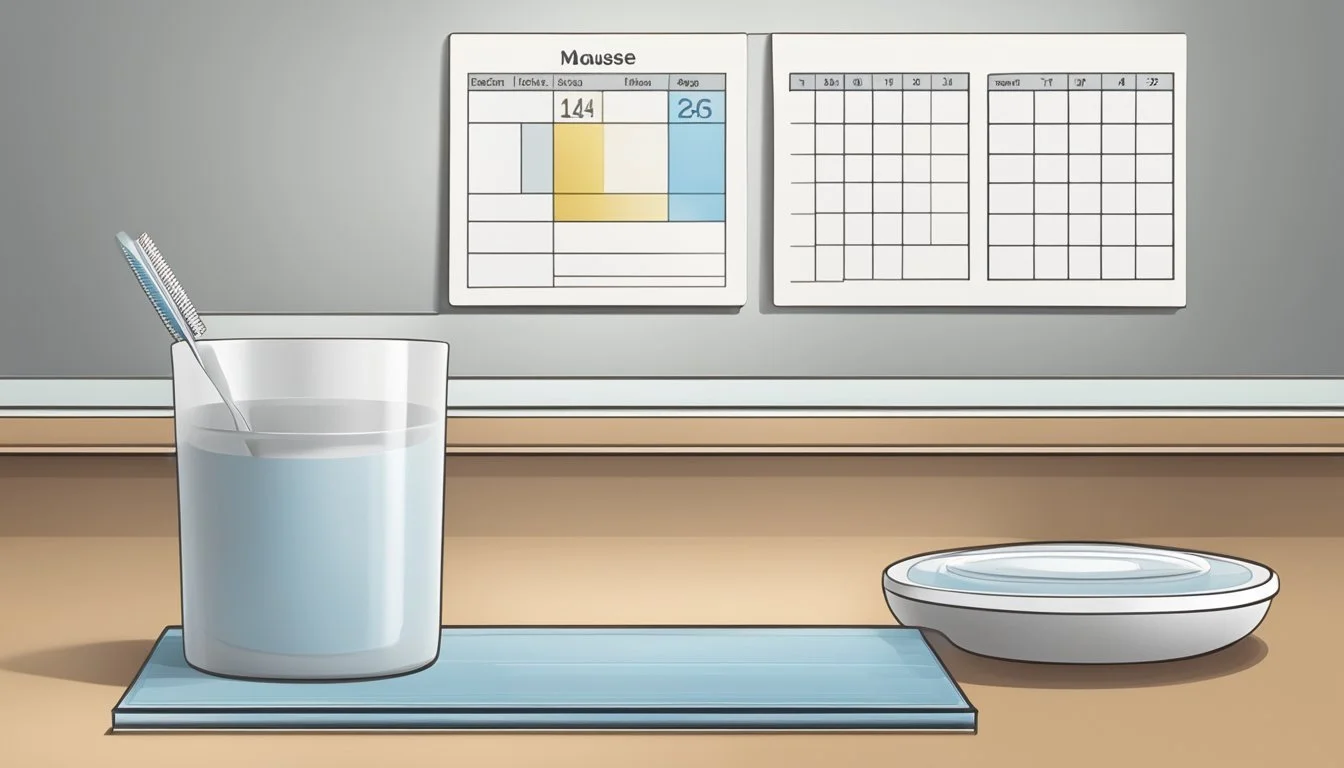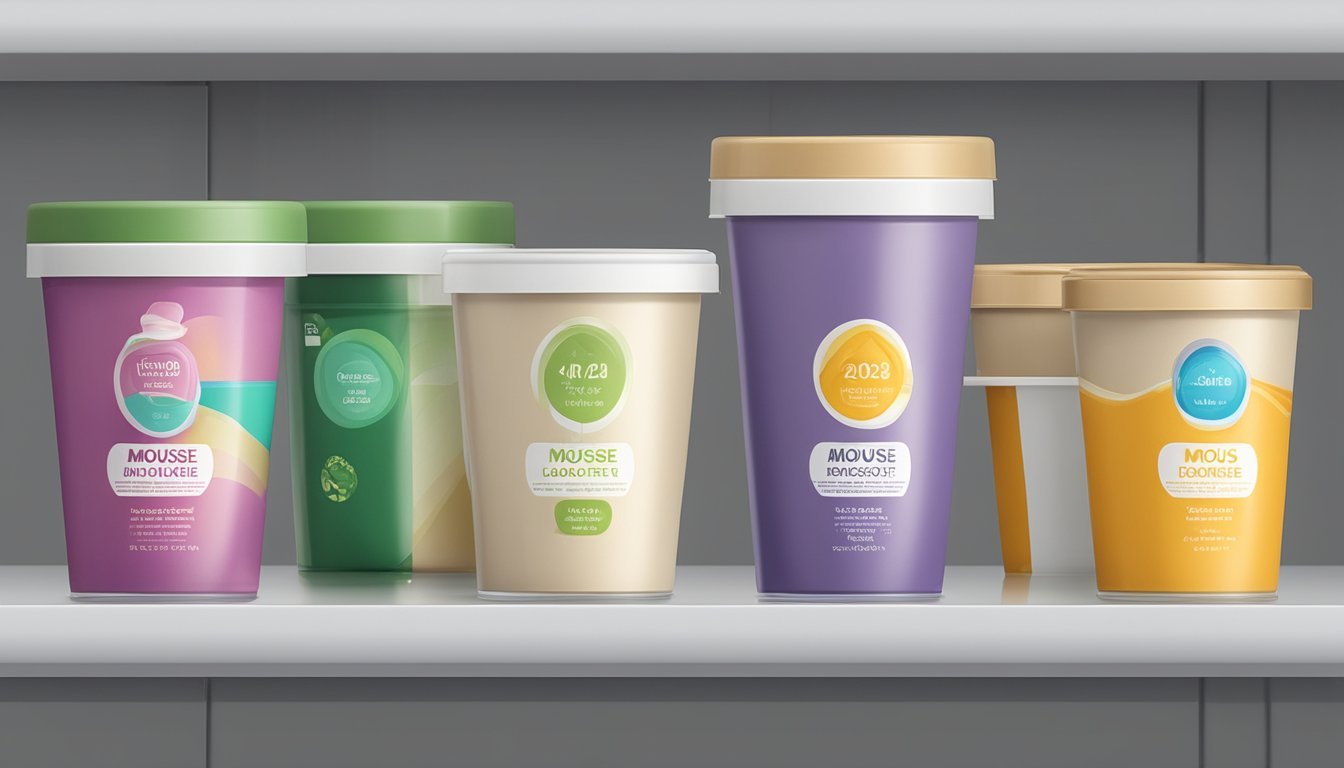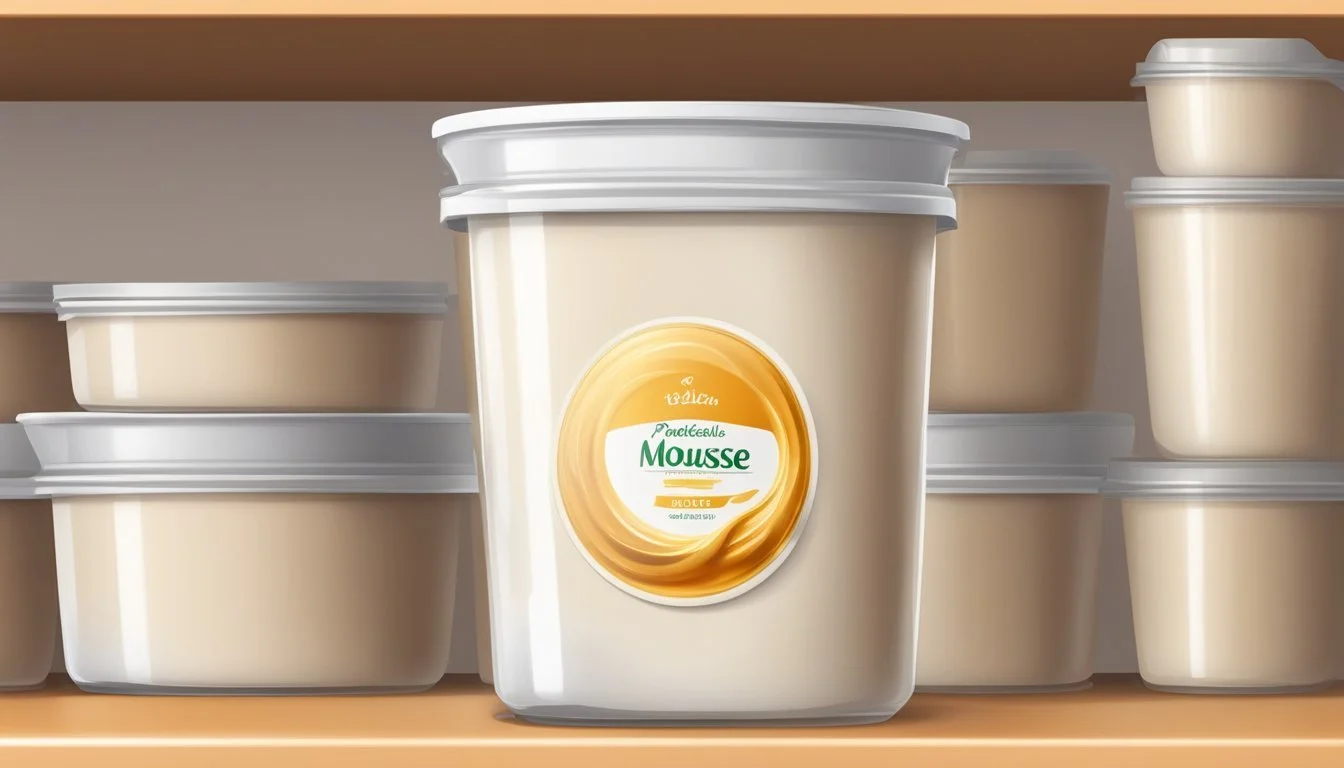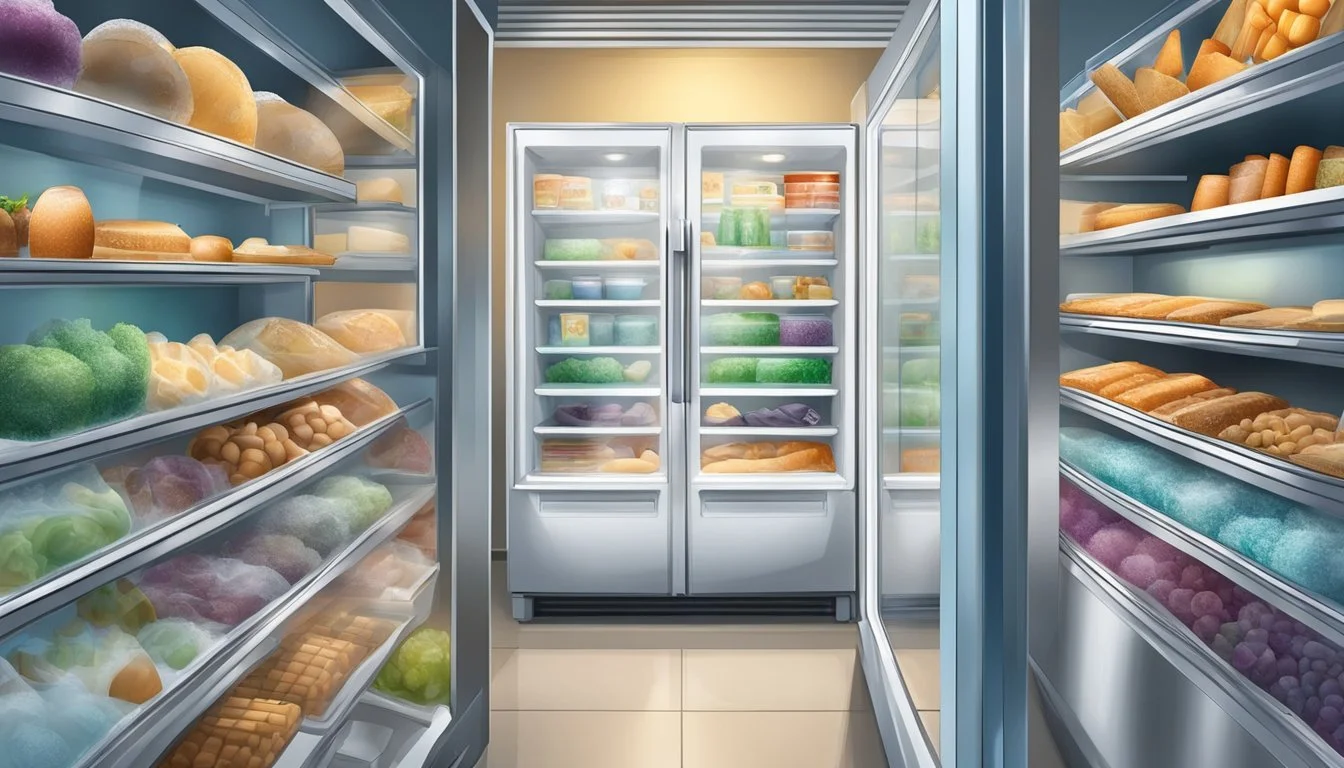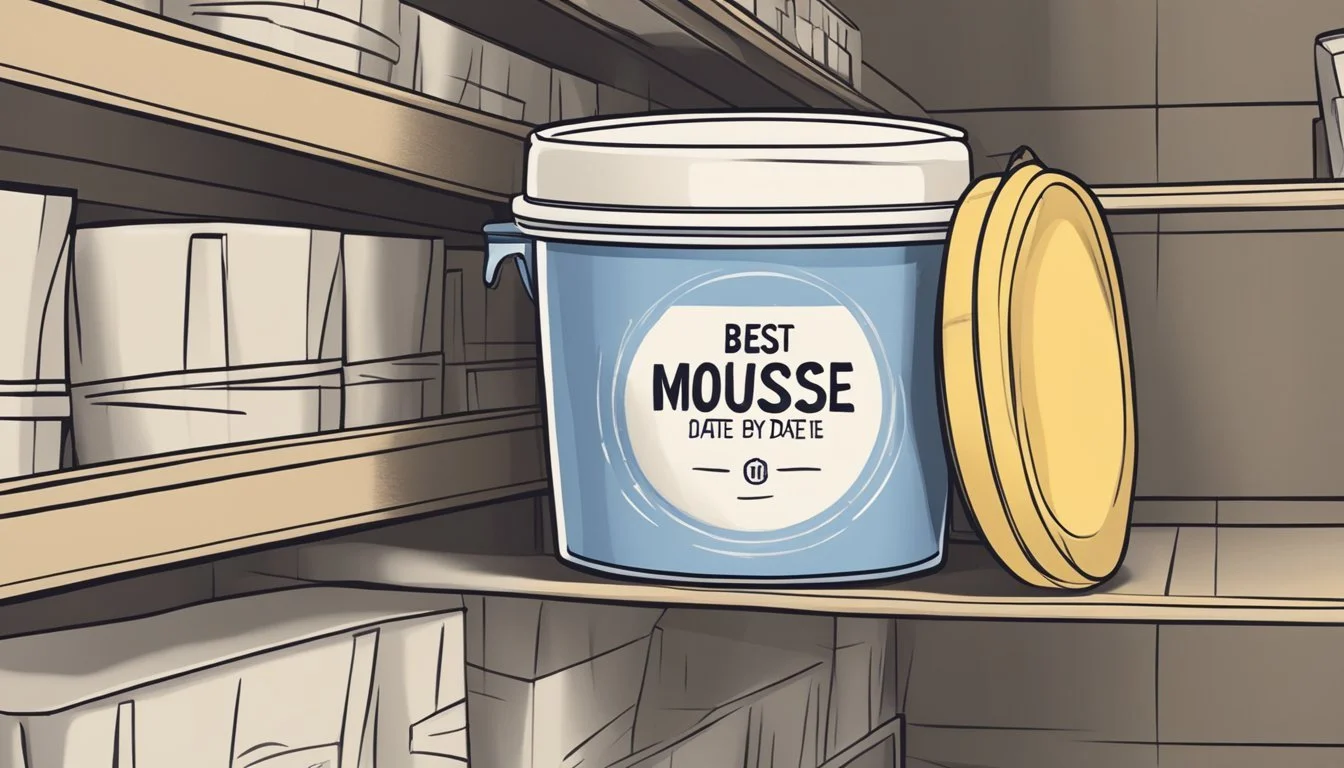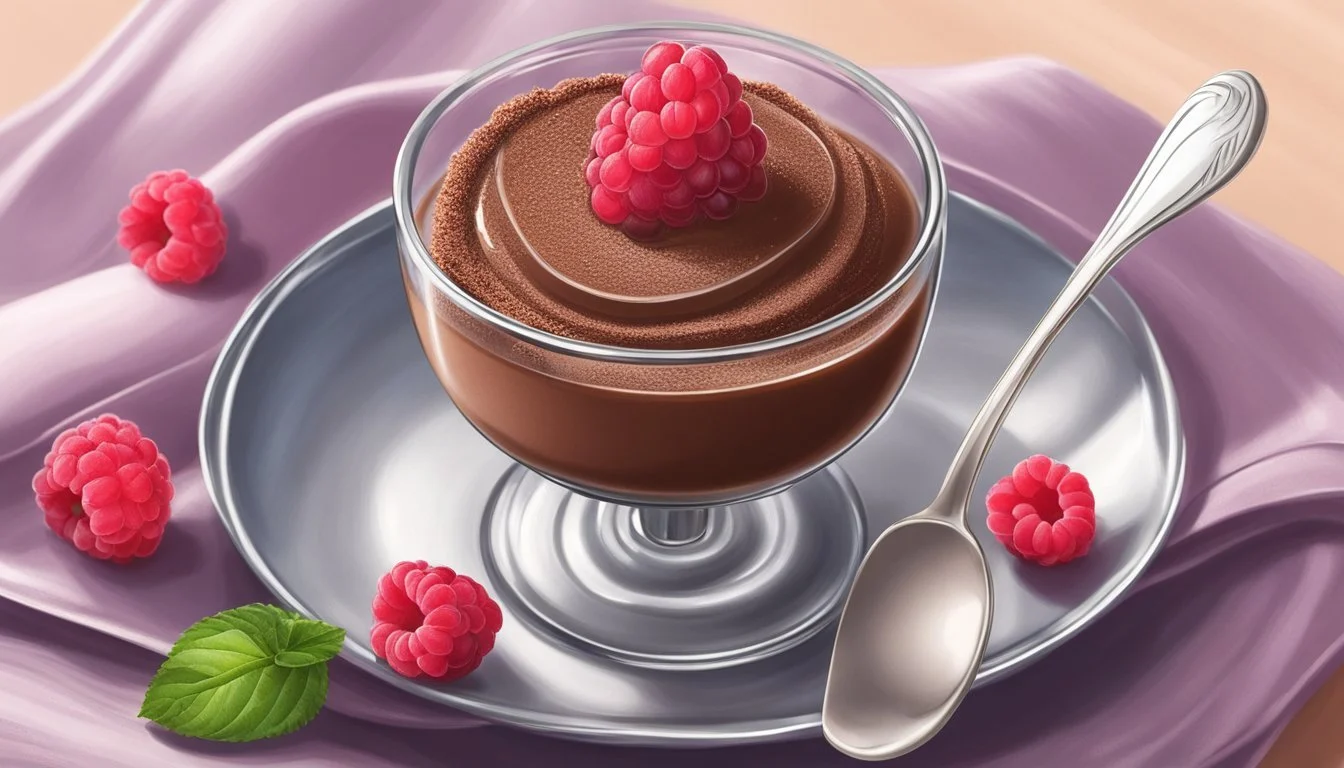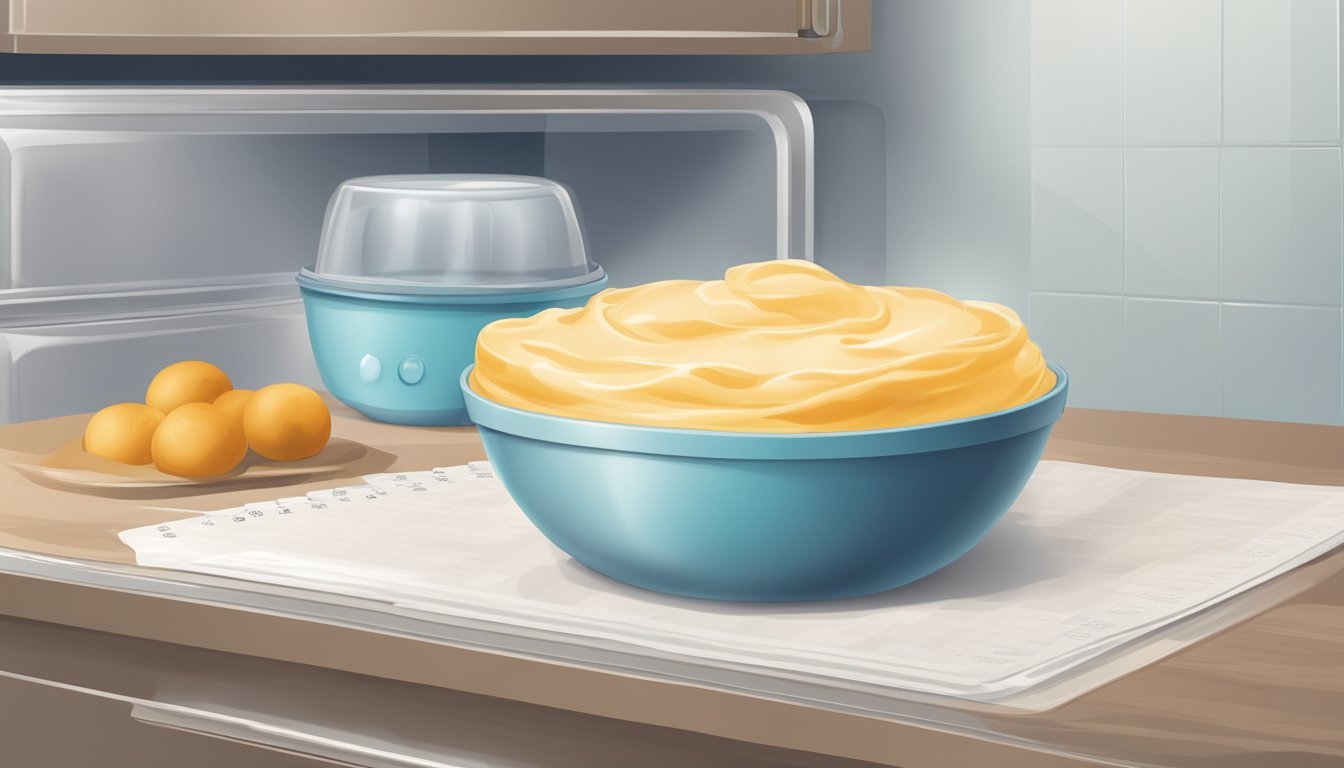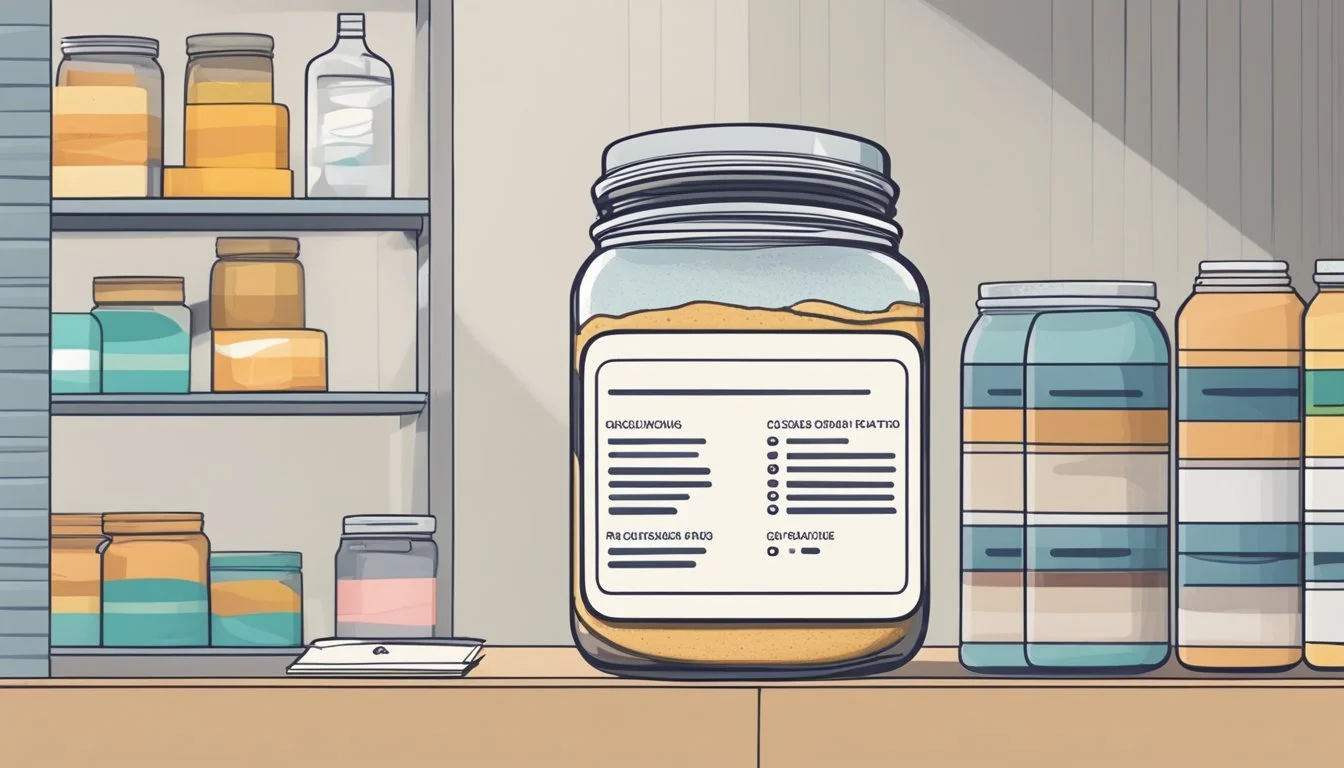How Long Does Mousse Last?
Shelf Life and Storage Tips
Mousse, known for its airy texture and delightful flavors, is a popular dessert that can elevate any dining experience. The shelf-life of mousse is relatively short due to its ingredients, which often include cream (how long does cream last?) and eggs. When stored in the refrigerator, mousse typically remains fresh for 3 to 7 days. The key to prolonging its freshness is to keep it in an airtight container, preventing it from absorbing other flavors or odors and protecting it from contaminants.
In warmer climates or at room temperature, the lifespan of mousse shortens significantly. A chocolate mousse, for example, should ideally be refrigerated within an hour of preparation to preserve its quality. If left outside, the mousse can last for approximately 3 to 6 hours, but this duration depends heavily on the ambient temperature. It's essential to monitor the mousse closely for any signs of spoilage, such as a sour smell or the presence of mold, and discard it if these are observed.
Hair mousse, on the other hand, is a styling product with a different set of considerations for expiration. A typical can of hair mousse lasts between 12 and 18 months after opening, with the period after opening (PAO) mark on the container serving as a useful guide. Users should be aware of changes in smell, texture, or effectiveness as indicators that the product may no longer be optimal for use.
Understanding Mousse
Mousse, a delectable dish known for its light and airy texture, can be savory or sweet, with dessert variations being the most common. The key to its delicate consistency lies in its ingredients, which often include whipped cream and sometimes gelatin. These components are critical for providing the characteristic fluffiness and stability that mousse is famous for.
Ingredients & Texture:
Whipped Cream: Integral for the smooth texture.
Gelatin: Often added to stabilize and maintain form.
A delectable culinary treat, mousse is crafted through meticulous whipping, which incorporates air bubbles into the mixture. This process results in a foam that's both creamy and substantial enough to hold its shape.
Quality & Flavor:
Freshness is paramount to ensure the best taste and quality.
Flavorings can include chocolate, fruit purées, and various spices.
Those who prepare mousse must be mindful of the perishability due to ingredients like cream and egg whites. Refrigeration is essential to maintain both safety and quality; however, different recipes may affect longevity. Mousses made with gelatin will last longer compared to those with fresh dairy or fruit.
Homemade Mousse Shelf-Life Fresh Dairy/Fruit 2 days Gelatin-based 5-7 days
Ultimately, the lifespan of mousse in the fridge is influenced by the freshness of its ingredients and storage conditions. One who is knowledgeable about the intricacies of mousse will ensure it is consumed at its optimal state, balancing the enjoyment of its flavors with food safety practices.
Types of Mousse
The versatility of mousse is reflected in its various types including dessert and savory options. Each type uses distinct ingredients that influence its shelf life and storage conditions.
Chocolate Mousse
Chocolate mousse is a creamy dessert typically made with high-quality dark or milk chocolate, eggs, and cream. It's known for its rich flavor and airy texture. The inclusion of chocolate stabilizes the mousse to a certain extent, allowing it to last in the fridge for approximately 3 to 4 days if properly covered. It's often used as a filling for chocolate cakes or served as an elegant stand-alone dessert adorned with berries.
Fruit Mousse
A fruit mousse incorporates pureed fruits such as strawberries, raspberries, or mangoes. These mousses are lighter and present an array of vibrant flavors. Here are two key points about fruit mousse:
Freshness is paramount since the fruit content can ferment or spoil. It should generally be consumed within 48 hours.
When topped or mixed with fresh berries, it not only enhances taste but also adds a layer of texture. The amount of time it can last slightly varies with each type of fruit used.
Savory Mousse
Savory mousse can be a refined appetizer or side dish. It often features ingredients like cheeses, meats, or fish. This type of mousse adds a luxurious texture to savory dishes. Consider these points regarding savory mousse:
Chilled and properly stored in the refrigerator, it can last 2 to 3 days.
The complexity of flavors in savory mousse pairs well with a variety of dishes, serving as a testament to its culinary flexibility.
Proper Storage Techniques
When storing mousse, one's primary goal is to maintain freshness and inhibit bacterial growth. Utilizing an airtight container is crucial, as it minimizes air exposure which can deteriorate the mousse’s quality. Mousse should be transferred into the container with care to prevent any contamination.
Refrigerator storage is the next critical step. The ideal fridge temperature is between 38°F to 40°F (3°C to 4°C) to preserve the integrity of the mousse. It's essential to check the refrigerator setting before placing the mousse inside.
For those who plan to keep the mousse beyond immediate consumption, freezing is a viable option. However, when opting to freeze mousse, ensure that the container is suitable for freezer use to prevent freezer burn. Mousse can generally last for about two months in the freezer, but for optimal quality, one should consider using it within 15 days.
Here is a summary for quick reference:
Airtight Storage: Seal in an airtight container to keep out unwanted air and contaminants.
Refrigeration: Store in the refrigerator at 38°F to 40°F.
Freezing Options: For extended storage, freeze the mousse in a freezer-safe container.
Storage Duration:
In the fridge: approximately 3 to 5 days.
In the freezer: best used within 15 days, can last up to 2 months.
Refrigeration and Freezing
Proper storage is paramount to maintain the quality and safety of mousse. The section below outlines the recommended approaches for refrigerating and freezing mousse, focusing on duration and temperature considerations.
Refrigerating Mousse
When refrigerated, homemade mousse typically lasts for 2-3 days if it includes fresh ingredients such as whipped cream or egg whites. For mousse made with stabilizers like gelatin, the lifespan can extend up to *5-7 days. Dairy-based mousses or those containing fresh fruit are best consumed within 48 hours to maintain freshness and prevent spoilage.
Stabilized Mousse: Up to 7 days
Fresh Ingredient Mousse: 2-3 days
Dairy/Fruit Mousse: Within 2 days
The optimal refrigeration temperature for mousse is at or below 40°F (4°C). It should be stored in an airtight container to prevent contamination and the absorption of other flavors.
Freezing Mousse
For long-term storage, one can freeze mousse for up to 3 months without significant loss of quality. To freeze mousse:
Transfer to an airtight, freezer-safe container or a heavy-duty freezer bag.
Flatten the bag to remove excess air and save space.
Freeze at 0°F (-18°C) or lower.
Note: After freezing, mousse should be thawed in the refrigerator rather than at room temperature to ensure that it maintains a safe temperature throughout the thawing process. It's important not to refreeze thawed mousse, as this can affect its texture and could potentially raise food safety concerns.
Signs of Spoilage
When assessing whether mousse has gone bad, several clear indicators should be noted. It is crucial to recognize these signs promptly to prevent the consumption of spoiled food.
Smell: A noticeable change in the aroma is a primary warning. Fresh mousse typically has a sweet or neutral scent, so any sour or off odors are indicative that the mousse may have spoiled.
Color: The visual aspect of mousse can alert to spoilage. Fresh mousse should exhibit a consistent and vibrant color. Any discoloration or fading suggests that it is past its prime.
Texture: The texture of mousse is meant to be smooth and creamy. If the product is lumpy, watery, or has a separated appearance, these changes suggest that spoilage has occurred.
Mold: The presence of mold is an unmistakable sign that mousse should not be consumed. Mold can appear as fuzzy spots on the surface in various colors.
Taste: Although it is not recommended to taste a mousse that shows signs of spoilage, an unexpected or sour taste is a strong indicator that it has gone bad.
Consumers should always inspect their mousse for these signs before eating:
Sign Indicator of Spoilage Smell Off or sour odors Color Discoloration or fading Texture Lumps, watery, separation Mold Fuzzy spots, discoloration Taste Unexpected or sour taste
If any of these signs are present, the mousse should be discarded to avoid the risks associated with consuming spoiled food products.
Shelf Life
The stability of mousse varies depending on storage conditions. It is crucial to note the different shelf lives when stored at room temperature, refrigerated, or after freezing.
At Room Temperature
Mousse should not be kept at room temperature for longer periods due to its perishable ingredients. Typically, it can safely remain at room temperature for a maximum of two hours. Beyond this time frame, the risk of bacterial growth increases, potentially leading to foodborne illnesses.
In the Refrigerator
Mousse's shelf life is extended when refrigerated. Homemade mousse typically lasts for:
3-5 days if it consists of eggs and whipped cream
For mousses made with stabilizers such as gelatin or commercially-prepared mousse, they may last up to:
5-7 days in the refrigerator
It's important to ensure that the mousse is stored in an airtight container to maintain freshness and prevent contamination.
After Freezing
One can freeze mousse to prolong its shelf life. When done correctly, frozen mousse can last for:
Approximately 2 months
For best quality, one should store the mousse in an airtight container to protect it from freezer burn and odor absorption. When ready to consume, thawing the mousse in the refrigerator is recommended to maintain its texture and flavor.
Health and Safety Considerations
When consuming mousse, it's essential to prioritize health and safety to prevent food-borne illnesses. Mousse, especially homemade varieties, often contains raw eggs, which can be a source of Salmonella if the eggs are contaminated. Food poisoning caused by harmful bacteria like Salmonella is a serious concern, as it can lead to symptoms such as nausea, vomiting, and diarrhea.
To mitigate the risks associated with raw eggs, one can use pasteurized eggs, which are heat-treated to kill bacteria without cooking the egg. Below is a list of precautions to ensure mousse is safe to eat:
Raw Eggs: Choose pasteurized eggs to minimize the risk of Salmonella infection.
Storage: Refrigerate mousse at 40°F or below to prevent bacterial growth.
Shelf Life:
Homemade mousse: 3-5 days in the refrigerator.
Commercial mousse: Up to 7-10 days, depending on the brand and ingredients.
Spoilage Indicators: Look for changes in texture, appearance, or smell, and the presence of mold.
Indicators of Spoilage Action Sour smell Discard immediately Mold presence Discard immediately Changes in texture or color Discard immediately
Consumers should regularly check for these signs and always consume mousse within the recommended time frame. Eating spoiled mousse can lead to serious health issues, hence taking these measures ensures both safety and enjoyment of this delicate dessert.
Reviving Frozen Mousse
When a mousse is frozen and subsequently thawed, it may lose some of its original airy consistency. The challenge lies in reviving it to a state that closely resembles its prior fluffy and soft texture. It's essential to undertake this task with care to ensure the mousse retains its delightful qualities.
Begin by transferring the mousse from the freezer to the refrigerator.
Allow it to thaw slowly, usually over several hours or overnight.
Avoid thawing at room temperature as it can lead to loss of texture and potential spoilage.
Technique for Revival: After thawing, the mousse might appear denser than before. To revitalize its consistency, one may gently fold in whipped cream. This introduces air and can help restore the mousse's fluffy character.
Step Action 1. Assess Consistency Check if the mousse has retained its structure. 2. Whip Lightly If dense, lightly whip to re-integrate air. 3. Introduce Cream Fold in whipped cream if necessary. 4. Serve or Set Further Serve immediately or allow to set in the fridge.
Remember, the goal is to achieve a balance between thickness and a soft texture. Over-whipping can lead to a grainy mousse, so one must be cautious not to overdo it. Folding is preferable to intense whisking in this scenario.
By adhering to these guidelines, one can help ensure that a previously frozen mousse regains much of its desirable qualities and continues to be a pleasing dessert.
Serving Suggestions
When presenting mousse, there are a variety of elegant and creative ways to enhance the dining experience. The versatility of mousse allows it to be served as either an individual portion or as part of a larger cake. For a sophisticated look, chefs might consider serving mousse in clear glassware to showcase its texture.
Individual Servings:
Single-serve dessert dishes or glasses can elevate the presentation.
Piping the mousse gives a professional touch.
Garnishing with chocolate shavings, fresh berries, or a dusting of sugar can add both flavor and visual appeal.
Mousse Cake:
Layering mousse in a springform pan atop a crust creates a stunning mousse cake.
A glaze or ganache can be applied for a glossy finish.
Decorate with berries or edible flowers for a natural and fresh look.
Pairings & Toppings:
Mousse pairs well with a variety of flavors. Consider the following:
Pairing Topping Dark chocolate mousse Raspberries and mint White chocolate mousse Strawberry slices and basil Coffee-infused mousse Crushed nuts or toffee bits
Texture contrasts are important. A crunchy element such as a cookie crumble can complement the smooth mousse.
Note: When serving mousse, ensure that it remains chilled until just before serving to maintain its structure and freshness. Mousse should be eaten soon after preparation to enjoy its optimal taste and texture.
Culinary Techniques and Tips
When preparing a decadent dessert such as mousse, specific techniques ensure the best consistency and shelf life. First, one must pay meticulous attention to temperature. For instance, ingredients like chocolate should melt gradually using a double boiler or in microwave increments to avoid burning, preserving the smooth texture fundamental to a quality mousse.
Storage is crucial for a mousse's freshness. Homemade mousse should be refrigerated within 1 hour of preparation to maintain quality. It can last for about 3 to 6 hours at room temperature, and for best results, it should be consumed within 2 days if it contains fresh dairy or fruit. If mousse is made with stabilizers such as gelatin, its fridge life extends to approximately 5 to 7 days.
For a mousse with a crust, it's vital to allow the mousse to set before the crust is added or served. Sufficient chilling time in the refrigerator, at least 15-30 minutes, is needed for the mousse to achieve the desired firmness.
Ingredient Type Attention Points Chocolate (for filling) Melt gradually; use a double boiler or microwave. Fresh dairy Consume within 2 days. Refrigerate quickly. Stabilized whipped cream Longer fridge life (5-7 days). Prioritize freshness for best taste.
Following these steps will not only ensure the safety and quality of the dessert but will also reflect in the taste and presentation of the final product.
FAQs and Troubleshooting
How can one check if their hair mousse has expired?
Discoloration: If the mousse has changed color, it may indicate spoilage.
Consistency: Mousse should be light and airy; if it's watery or clumpy, it’s likely expired.
Odor: A sour or unusual smell is a clear sign that the product should not be used.
Performance: A noticeable decrease in the product's performance might mean it's time to dispose of it.
Mold Growth: Any visible mold growth means the product is contaminated and should be discarded immediately.
Can using expired hair mousse harm one's hair or scalp?
While using expired mousse typically won't harm hair or scalp, it might not provide the intended styling effect or could cause irritation. Users with sensitive skin or scalp conditions should be particularly cautious.
What should one do if they've used expired hair mousse?
If one experiences irritation after using expired mousse, they should stop using the product and wash their hair with a gentle shampoo. Seeking advice from a dermatologist is recommended if irritation persists.
How can one extend the lifespan of their hair mousse?
Store the mousse in a cool, dry place away from direct sunlight.
Ensure the cap is securely fastened after every use to prevent the product from drying out.
Avoid storing in the bathroom where humidity levels can fluctuate.
Is there a way to identify the expiration date of hair mousse?
Some mousse products have a Period After Opening (PAO) symbol indicating how long the product will remain effective. Typically, the PAO for hair mousse is between 12 to 18 months. Check the packaging for this symbol or an expiration date.
Additional Dessert Options
Innovative dessert options extend the versatility of mousse beyond its traditional presentation. Explore how cupcakes, brownies, and hot chocolate can be enhanced with the rich, airy texture of mousse.
Cupcakes with Mousse Filling
Cupcakes provide a perfect canvas for a delightful mousse filling. A standard approach involves coring the center of baked cupcakes and piping in a generous amount of chocolate or fruit-flavored mousse. This surprise center not only adds a layer of moistness but also a luxurious texture, elevating a simple cupcake to a gourmet dessert.
Chocolate Cupcake: Filled with raspberry mousse
Vanilla Cupcake: Filled with lemon mousse
Red Velvet Cupcake: Filled with cream cheese mousse
Brownies Topped with Mousse
For brownie enthusiasts, a layer of mousse on top adds a sophisticated twist. After the brownies have cooled, a thick layer of chocolate mousse can be spread across, creating a dual-layer dessert that combines the dense chewiness of brownies with the lightness of mousse. Serve chilled to maintain the perfect consistency.
Classic Brownie: Topped with dark chocolate mousse
Blondie: Topped with white chocolate mousse
Espresso Brownie: Topped with coffee-infused mousse
Mousse-Based Hot Chocolate
Transforming hot chocolate into a decadent treat, mousse can be incorporated to create a frothy, creamy version. Chocolate mousse can melt into the hot milk, enriching the flavor profile and making for an indulgent hot beverage unlike any other.
Milk Hot Chocolate: With melted milk chocolate mousse
Dark Hot Chocolate: With melted dark chocolate mousse
Spiced Hot Chocolate: With melted cinnamon mousse
In each of these dessert options, the mousse not only complements the base dessert but creates an experience that's rich and satisfying, inviting adventurousness in both creation and enjoyment.
Exploring Mousse Variations
When it comes to chocolate mousse, the type of chocolate used significantly impacts the final flavor and texture. Whether opting for white, milk, or dark chocolate, each brings a unique quality to this classic dessert.
White Chocolate Mousse
White chocolate mousse is known for its creamy and delicate flavor profile. It is typically made from cocoa butter, sugar, and milk solids. Here's a simple breakdown:
Ingredients: Typically includes white chocolate, heavy cream, and sometimes egg whites.
Texture: Smooth and light with a velvety consistency.
Milk Chocolate Mousse
Milk chocolate mousse offers a balance between the intensity of dark chocolate and the subtle sweetness of white chocolate. It's favored for its comforting, familiar taste.
Ingredients: Combines milk chocolate with components like heavy cream, a sweetening agent, and egg whites for aeration.
Texture: Creamy with a rich, yet not overwhelming, chocolate flavor.
Dark Chocolate Mousse
Dark chocolate mousse is the go-to option for those who prefer a less sweet and more pronounced chocolate experience. It can range from semi-sweet to bittersweet varieties.
Ingredients: Dark chocolate, often with a higher cacao content, is paired with elements such as heavy cream and, occasionally, strong-flavored liqueurs.
Texture: Dense and robust, providing a deeply satisfying chocolate hit.
Ingredient Selection for Optimal Flavor
When creating mousse, selecting high-quality ingredients is crucial for achieving the best flavor. Fresh ingredients are the foundation of a delicious mousse, as they impact the freshness and taste significantly. Chefs advise using the freshest possible vanilla extract and cocoa powder to ensure a rich and authentic flavor profile.
For a sweeter mousse, the type of sweetener plays a critical role. It's important to balance sweetness with the other flavor profiles of the dish. A high-quality, subtle sweetener can enhance the mousse without overpowering it.
Chocolate is often the star of mousse recipes, and using premium chocolate chips or finely chopped chocolate from a high-quality block can transform the dessert. The better the chocolate, the more decadent and satisfying the mousse will be.
Here's a quick reference for selecting ingredients:
Vanilla Extract: Choose pure, real vanilla extract over imitation for a more natural and potent flavor.
Cocoa Powder: Opt for unsweetened, high-quality cocoa powder for depth and intensity.
Chocolate Chips: Use chocolate with a high cocoa content for a less sweet, more sophisticated taste.
In conclusion, attention to the quality of fresh ingredients and thoughtful selection of vanilla extract, cocoa powder, and chocolate chips will ensure your mousse has an optimal flavor that is both sophisticated and delightful to the palate.


